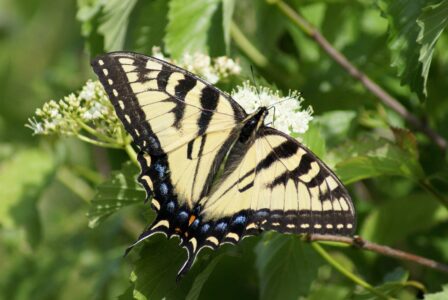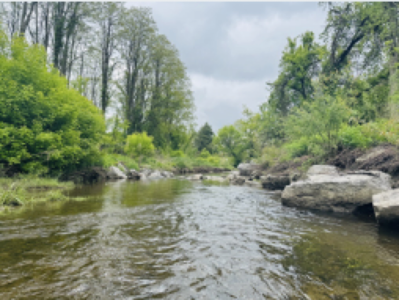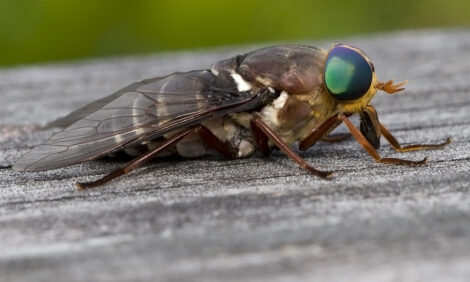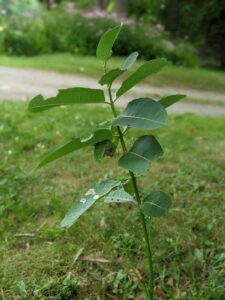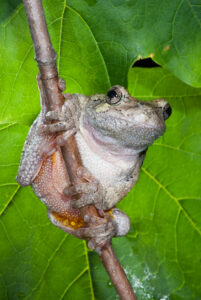Natural Shoreline Helps Chautauqua Lake Health
In the fight against the degradation of Chautauqua Lake’s waters, lakeshore gardens are the final defenders against the onslaught of nutrient-filled storm runoff.
“Buffer zones are the last line of defense, not the line of defense,” said Doug Conroe, Chautauqua Institution’s director of operations. “They’re a necessary solution as part of a whole of efforts that help solve the lake’s problems.”
A riparian buffer zone is an area of natural vegetation along the shoreline of a water body that filters excess nutrients from storm runoff, stabilizes the bank against erosion, and provides a habitat for native species.
“When we can improve insect life by giving them a habitat, we improve the aquatic life that lives off them,” Conroe said. “That helps the fish, which all work to help the lake.”
Chautauqua Lake is facing a serious problem that has the potential to radically change its biological structure and levels of productivity. Storm and snowmelt runoff in the watershed carries nutrients like phosphorous and nitrogen into the lake’s water body, where they encourage the unchecked growth of vegetation and toxic algae, a process called eutrophication. These algal blooms can infest entire lakes and suffocate or outcompete local plant and fish populations, ultimately causing the lake to die.
“Water runoff management is the largest concern for the Institution and larger lake community when it comes to issues affecting the lake’s health,” Conroe said, “and buffer zones are a very important tool to use in the fight against water degradation.”
They’re also a very easy tool to implement. The way a riparian buffer works is by using the root systems of native shrubs and trees to dig into the soil of the bank and act as stabilizing filters, lessening the amount of phosphates, nitrates and eroded sediment that is swept into the lake. Any property owner with a lakefront lawn can help protect Chautauqua Lake’s health by planting a garden in between their yard and the water’s edge.
According to a 1996 publication from the Illinois Environmental Protection Agency, native plantings have denser, deeper root systems that can filter up to 95 percent of sediment and 60 percent of nutrients from the runoff passing through it. Conventional grass lawns lack this depth of root structure needed to sift out the nitrogen and phosphorous. However, many property owners prefer this type of lawn because of the uninterrupted views of the lake it provides.
“What most people don’t realize is that plantings and trees can actually increase the property value of a house, as well as the view,” Conroe said.
According to an Oct. 10, 2013, article in The Wall Street Journal by Sanette Tanaka, a study by a landscape and planning commission in Portland, Oregon, found that homes with trees on the street in front of the house sold for over $7,000 more than those without. Likewise, in 2006, The Washington Post published an article by Joel M. Lerner in which real estate appraisers said that landscape design is one of the main reasons homes sell and that plantings can increase property value by 15 percent. “Plants are a valuable addition to a home, especially trees,” Lerner wrote. “They increase in value as they mature.”
Despite findings like these, Conroe says a change in mindset is needed for many Chautauquan homeowners to get used to the idea of plants entering the frame of their beloved views. This is where buffer zone advocates in the community come into play.
“We need neighbors to help neighbors,” Conroe said. “We have a lot of people on the grounds who are in favor of natural zones, and we need them to help spread the word to everyone else. Media coverage, scientific reports, collaborative efforts all of these things need to work together.”
Conroe said that buffer zones may require some weeding, mulching or watering, but the maintenance required is no more intensive than maintaining any other flower garden. When it comes to what types of plants are appropriate to use, anyone interested can take a look at the signs posted around the Institution’s lakeshore gardens that list the species and varieties of plantings present.
Green infrastructure is favorable to increased industrial efforts, and buffer zones are no exception. When the choices are either planting a garden or pouring more money into the Chautauqua storm sewers, Conroe thinks the former seems like the obvious choice.
“Managing these shore gardens does increase our garden department’s workload quite a bit, because it is a large amount of space,” Conroe said. “But at the end of the day, that cost is less than the cost of installing and maintaining more storm sewers around the grounds.”
This article was originally published in The Chautauquan Daily on Aug. 1 and is reprinted with permission.
Zachary Lloyd is an environmental reporter for The Chautauquan Daily and a recent graduate of Ohio University with a bachelor’s degree in magazine journalism and a certificate in environmental studies. The Chautauqua Watershed Conservancy is a local nonprofit organization that is dedicated to preserving and enhancing the water quality, scenic beauty and ecological health of the lakes, streams, wetlands and watersheds of the Chautauqua region. For more information, call 664-2166 or visit chautauquawatershed.org or facebook.com/chau tauquawatershed.

